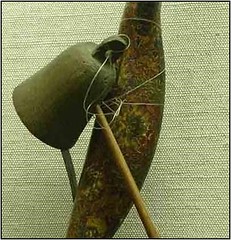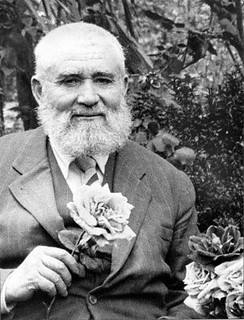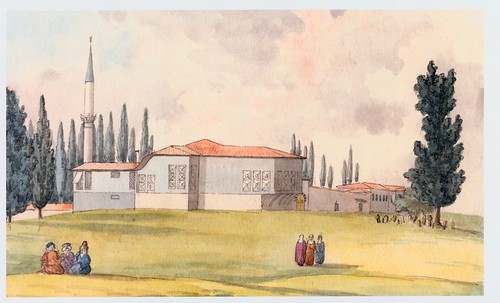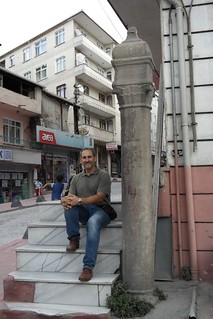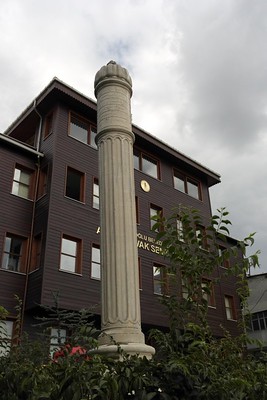 Flight Archery and Monumental Flight Stones in Ottoman EmpireDr. Murat Özveri In the Istanbul Military Museum that I visited hundreds of times, I once witnessed three German guys speaking in front of a window in the Archery Section. In the window “darb” targets were on exhibition, hard objects pierced with arrows. “Darb” was a custom in Turkish archery that is based on piercing hard objects, usually performed as a demonstration of skill, a sort of public show, and undoubtedly a practice for acquiring the ability of piercing the enemy’s armor. These guys who were impressed by seeing metal bells and plates as well as glasses with arrows stuck in, expressed their amazement and started a conversation about how strong the ancient men were. After only a few sentences the chat turned towards Robin Hood: a legendary hero, the noble thief whose name was mentioned in medieval English ballads, who later got great reputation with James Frazer’s novel and spread worldwide with Hollywood movies. The soul of a character with no proof of existence instantly slipped out of nowhere and dominated the conversation of these tourists just in front of the solid evidences of incredible performances of Ottoman archers. I am not against legends, nor the renowned English longbow but in this particular situation I noted a paradox, at least because most Ottoman archers had been documented by names and with their unsurpassed achievements in flight archery. No need to mention the incomparably superior physical and ballistic features of the Asiatic, reflexed, recurved composite bow. Reflex, recurved short Asiatic bow is superior to straight-limbed wooden bows in terms of its energy storing and transfer capabilities (Photo: Doğan Alpay). Darb required strong and highly efficient bows, physical strength to shoot them and a perfection in shooting technique to control the arrow’s oscillation. The Asiatic bow that was developed to an unsurpassed level by Ottoman bowyers and thumb release fulfilled two of these three requirements. The third of the requirements, skilled and powerful archers, was a result of a systematic and institutionalized archery culture that inherited more than just a few interesting targets in museums’ collections. The main topic of this article is neither piercing of targets with arrows nor another target discipline. The Everest of Turkish archery was the distance (flight) shooting discipline. This discipline and the reached distances were also the reason of western world’s interest to Turkish archery. Here, one of the lead roles was undoubtedly played by the Ottoman composite bow. Some of the records are still beyond the maximum distances achieved with natural-material bows in modern times. More importantly, archery-specific sports fields, the earliest sports clubs, were formed throughout the Ottoman Empire, reaching total 36 in entire 621 years of empire. Darb targets saved and exhibited in the Military Museum in Istanbul (Photos: Author’s archive). Still being behind the popularity of Robin Hood and his wooden bow for the average men on the street, the Turkish composite bow and the rich culture that surrounds it take archery enthusiasts’ attention more and more nowadays. In fact, this interest is not new, especially not in German-speaking world. Joachim Hein’s work in Linguistics “Bogenhandwerk und Bogensport bei Osmanen” written in 1926 inspired later Paul Klopsteg who authored “Turkish Archery and the Composite Bow” in 1947. It is said that Klopsteg corrected some minor mistakes in Hein’s work thanks to his know-how and ability in archery as a practicing archer. Both of these works were based on an Ottoman archery treatise by Mustafa Kani “Telhis-i Resâilât-I Rumât“ (Abstract of Treatises on Archery) written in 1837. Necmeddin Okyay (1883-1976) was a sufi, calligrapher, gardener and archer. Being a good example of the “Hezarfen” (lit. meaning “Thousand Sciences) or multi-talented Ottoman scholars. On the photo on the left side he is seen with a flight bow and “bilek siperi” shooting for distance. As a gardener who was specialized on rose breeding he is seen with a rose in his hand on photograph on the right (TDV İslâm Ansiklopedisi). While bow and arrow were still a valuable weapon of war, archery found a place as a sport discipline in Ottoman Empire. According to Anglo-American sources, archery’s transition from a martial art to a sport discipline is dated to the reign of King Henry VIII of England. However, nearly one hundred years before this era and thousands of kilometers far from the British Island, Ottomans were founding archery fields, providing systematic archery training and organizing competitions. In spite of maintaining its identity as a martial art, archery in the Ottoman land was a sport discipline in the modern sense; was quite sophisticated with its institutional aspects, systematic training and proficiency standards. It was also unique with links to the Islamic mysticism, a philosophy that had severe influences on Turkish social and political life between 11th to 15th centuries. It was the first in Europe and Middle East since Archery Fields (okmeydanı) had existed in ex-capital cities, Edirne and Bursa. Old treatises mention that the first field dedicated to archery was founded in Edirne in early 15th century. The number of fields increased in time while another – but tightly bound – institution of Turkish archery, The Archery Club or Archer’s Lodge (Okçular Tekkesi) existed only in a few of these fields. The best known of these clubs – if not the only ones – were in Istanbul and Cairo. Archer’s Lodge was built and worked very much like a modern sport complex; having libraries, dormitories, museums and office rooms. According to “Kânunnâme-i Rumât” (Regulations for Archers) written by Katip Abdullah Tschelebi in 17th century, the archery field of Istanbul had been the place where Sultan Mehmed II had had his royal tent settled for some time to observe the conquest of the city. After the conquest, he bought this property by paying twice of its actual value, registered it as a foundation and donated it to archers. In his “fermân” – official written order –, the purpose of establishing the field is explained as: “for gazi’s (veterans of holy war) and people to shoot, and as a place for saying public prayers”. Istanbul Okçular Tekkesi was built later, by one of the viziers of Sultan Bayezit II, in 1490’s. Okçular Tekkesi as depicted by Carl Gustav Löwenhielm, the Swedish envoy, in his watercolour paintings. 19th century. In Islamic world there were fields dedicated to other sportive/martial activities, such as “çevgân” (polo), “kabak” (a mounted archery game), “cündî” (stunt riding and using weaponry on horseback) and “güreş” (wrestling). However, archery-specific fields that were institutionalized as foundations can only be seen in Ottoman culture. Among the mentioned sports there is another archery-related one, “kabak game”, in which the mounted archer shoots at a gourd or similar target on the top of a high pole at full gallop. Kabak game was also popular in the empire until 17th century but the only “kabak-specific” field is known to have been established in Trabzon, a city in northern Anatolia. Apparently, in other cities any convenient field with proper dimensions was chosen to play this game or other sport-fields were temporarily used for that purpose. Sultan Murad II playing kabak game in the presence of European diplomats (Hünernâme, 16th century). There were two main disciplines in Ottoman archery: target and distance (flight) shooting. In the target shooting discipline, archers shot at a pear-shaped, leather pillow called a “Puta” or a medium-sized basket that was called a “Puta basket” from 165 to 265m. This incredible target distance was applied in Istanbul Okmeydanı, where the greatest champions of their time gathered. In the okmeydanı in Cairo the puta was put to a more reasonable distance, 90m only! A miniature showing archers shooting at “puta basket” on Istanbul okmeydanı (Franz Taeschner). Despite the astonishing target distances, the distinguishing characteristic of Ottoman archery is flight shooting. The skill one acquired in distance shooting was also associated with the proficiency standards, the minimum requirements expected to register him as a “proficient shooter”. Archery was considered as a profession/art, and like other professions/arts, a systematic training by a master/instructor (pîr) was appreciated, especially because it was believed that such a process would make people mature, wise and beneficial for himself as well as for the society. A phrase that still exists in modern Turkish, “nursuz pîrsiz”, someone who hasn’t had a “pîr”, is a humiliating referral to people whose attitude does not match the code of behavior. In the Turkish world there was a well-developed guild system that can be tracked back to 11th century. While many other professions were based on a three-stage qualification system, i.e. apprentice, foreman and master; in archery the “tâlip” (candidate) was supposed to practice to be able to shoot to 900gez (594m) with a pişrev (peshrav) arrow or to 800gez (528m) with an azmayiş (azmaayish) arrow – different types of flight arrows. Only after this achievement that had to be witnessed by a minimum of four persons (due to Islamic regulations, two being at the shooting line and two waiting for the arrow to land), he was accepted as a proficient shooter. His ability and skill were declared by recording his name in the “Register Book of the Archer’s Lodge”. He was also honored with a sort of “promotion” or “graduation” ceremony in which his new status was declared. In this ceremony a bow (-grip) was given to the brand new master by his “pîr” whereas the transfer of archery know-how from one generation to another is symbolized. The bowgrip was a mystic symbol based on the Sufi interpretation of a particular verse from Holy Quran. Contrary to the strict dualism in orthodox Islam, Sufist cosmology embraced a unification of opposite forces, as can be observed on the grip of a bow, which unifies the upper and lower limbs that symbolizes evil and good, respectively. This ceremony was called “kabza alma”, literally meaning “Grip Taking”. A similar ceremony was held to declare the acceptance of the tâlip as trainee, as a kind of initiation ritual. These two “grip taking” procedures were distinguished as “little” and “big”. After the “Big Grip Taking Ceremony” the archer became a “kabza sahibi” or “grip owner” and the next step in his career would be reaching longer distances, breaking the existing records that had been marked with monumental columns on the archery field. Turkish archery had other similarities with other esoteric institutions of the time. Archer’s Lodge was not a simple archery school. Regular meetings and classes were held to educate archers and help them become mature, good-tempered people who had moral values. There was a list of unwritten rules dictating a code of behavior. Archers who did not obey these rules had to face a strict social isolation, until they apologized and were welcomed back by the community. None of the mentioned physical archery applications would have been possible without the Ottoman composite bow. Being a member of Asian composite bow family, it has been developed to an unsurpassed quality. The development continued towards an ultimate sports tool after 17th century, probably because the bow lost his importance as a weapon of war. The furthest documented distance in Ottoman flight archery is 845,5m achieved by Tozkoparan İskender. He had records in many okmeydanı other than that in Istanbul. His nickname “tozkoparan” refers to his incredible strength with which he once grasped a bow’s grip and broke the beech bark (toz) covering its back. He was well-known with his high skill in target shooting as well, an ability he used in his profession, like the Battle of Sapienza (or Zonchio) against Venetia, in 1499, where he was in charge with the protection of the admiral’s ship as one of the elite archers of the army. All the archers who had been trained and given kabza in Istanbul Okçular Tekkesi were recorded in the Register Book of the Lodge. First of the two volumes was destroyed in a fire in the Lodge. The second volume of the Register Book was started by Katip Abdullah Tschelebi, one of the Sheikhs of Okçular Tekkesi, in 1683. As can be seen in the title “sheikh” of Lodge’s director, Sufism had influences on many aspects in okmeydanı, especially on the moral values. In some cases, this influence seems to have dominated the scene. The class-based discriminations that were common in all empires of the time, were sometimes ignored on the archery-fields. A vizier-archer Kemankeş Kara Mustafa Pascha is known with his famous words: “My political position and identity were left out of the field. I am one of you, here”. There have been viziers and even sultans who were trained and took “kabza” in Istanbul; Bayezid II, Murad IV, Selim III, Mahmud II to mention a few. The privileges of the sultans were limited: they did not kiss their master’s and sheikh’s hands during the kabza alma ceremony and they had a private room to rest in the Archer’s Lodge, but that was all. Some of the sultans marked up new shooting lanes – mostly with remarkable distances – and no other archer tried to overshoot them, just because of the respect they had to show to their sultans. Until very recently the flight stones had weird in situ positions showing the wild, illegal urbanization. Short ago they were moved to the yard of newly re-built Archer’s Lodge (Photos: Tunç Beyhan). The shooting lanes, or “menzil” as called in Turkish, were directions marked up with two columns. The shooting spot was usually marked with a humble, small stone, except some few examples like that of Sultan Mahmud II (a small pool with a fountainhead in Baroque style!). A direction was chosen carefully by considering the winds. The shot had to be longer than 900gez and the spot the arrow landed gave the location of the second column of the menzil, and of course, the exact shooting direction for archers who will be trying their chance on the same menzil. Traditionally, this column was taller and more attractive than the stone marking the shooting line. Other archers later practiced on these menzils to shoot further and each new record brought the right to erect a monumental column. These columns were made with meticulous work with the contribution of many professionals, i.e. a stone carver, a calligrapher and a poet. Depending on the financial power of the individual archer, some columns were relatively humble, while some other, especially the ones that belonged to the sultans were huge and highly decorated. Most of them have a lyric text facing the direction of the shot, recording the name of the archer, the distance he reached and the date of the shot. “Having an erected stone” that is another surviving phrase in modern Turkish, was taken very seriously and motivated many archers as an occasion to carry their names and sportive success to the future. The willpower and success of an athlete, the artistic creativity of a poet and of a calligrapher came together and solidified on each flight stone (Photos: Tunç Beyhan). The willpower and success of an athlete, the artistic creativity of a poet and of a calligrapher came together and solidified on each flight stone. These monuments are known to have been as much as 300 in 17th century. Today, a much smaller number – less than 40 – which has not been stolen, destroyed or could somehow escape from being the victim of unplanned urbanization, stand silent and proud, keep honoring the unforgettable past of Turkish traditional archery. Appendix Approximate English spellings for proper pronounciation of Turkish terms in the text Okçular tekkesi: oktsular takkasee The author thanks Rita Somogyi for her kind help in reading and meticulously correcting the text. This article was published in Traditionell Bogenschiesen Magazine (Sept. 2013) in German as translated by Jan Sachsers.  |




